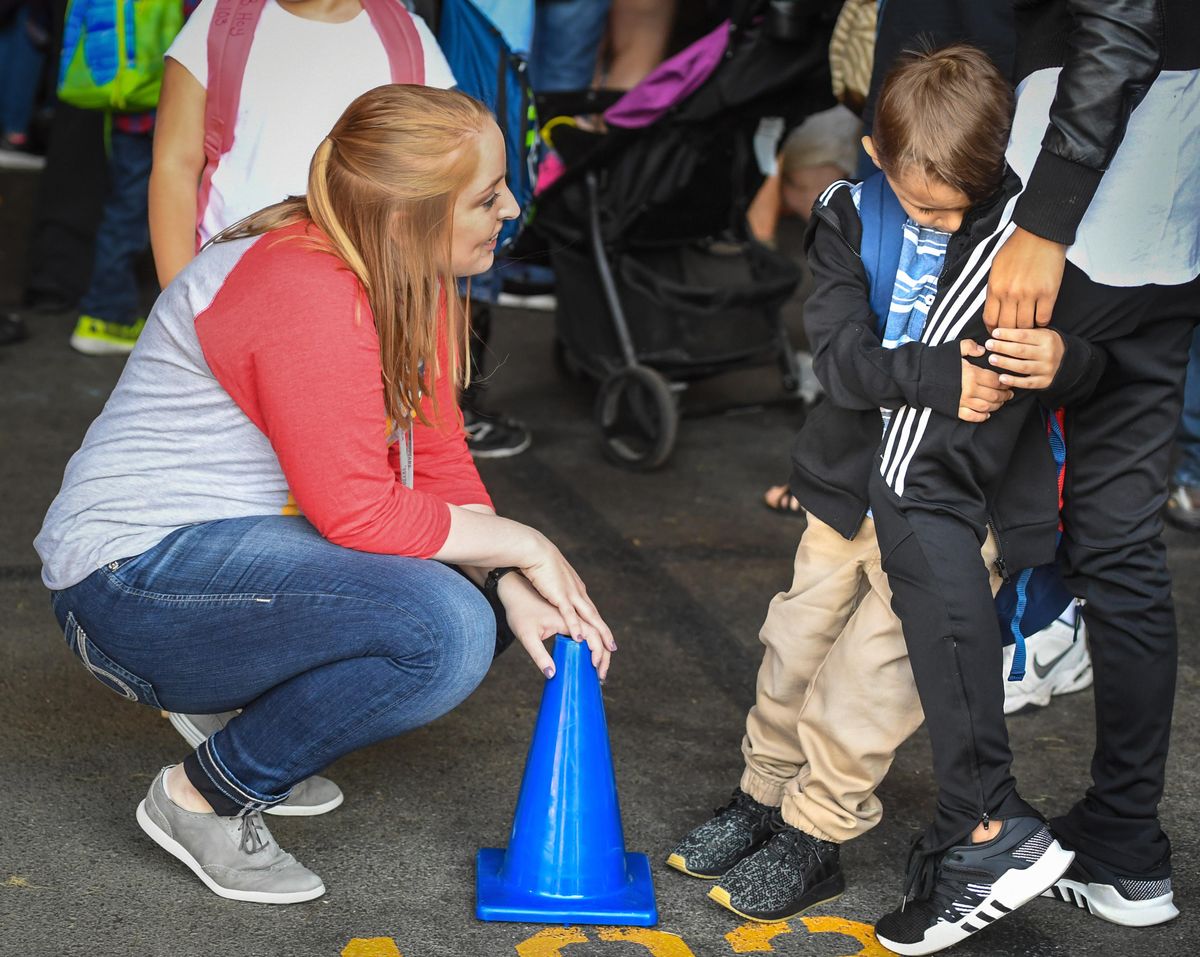Full-day kindergarten starts fifth year in Spokane Public Schools

On Wednesday morning at Cooper Elementary School, new kindergartners brought their essential supplies, all stuffed in their backpacks.
So did their parents – straight from a tissue box.
Inside Nancilee Sloan’s class at the end of the hall, crayons and paper rested on low tables that quickly filled with quick hands and eager minds.
Parents crouched and guided and gestured, even as the clock hit 8:30 a.m. – the start of the school day and the beginning of the school year for thousands of Spokane kindergartners.
Finally, the parents reluctantly walked out the door, some with tissues drying their eyes.
A few children needed them too, but Sloan and her volunteers were ready.
“It’s always an exciting day, and very emotional,” said Sloan, who has spent all of her 33 teaching years at the Hillyard-area school.
Nearly all of those have been spent in the kindergarten classroom, where Sloan’s biggest job is helping her youngsters adjust to a new routine while creating an atmosphere that allows them to grow – socially, emotionally and academically.
For Sloan and other kindergarten teachers, the job is easier thanks to the state’s decision five years ago to require that districts offer full-day kindergarten in every elementary school.
It was a trendsetting decision. After decades of half-day kindergarten, Washington is the only state west of the Rockies and one of just 15 in the nation that mandates all-day kindergarten.
Reports show that when states offer full-day kindergarten as an option, many families take advantage: 35 states report that 70-89 percent of their students attend full-day kindergarten programs.
Half a decade later, Spokane Public Schools educators are grateful for the change.
“One of the things I like about the state of Washington is how they support their kids,” said Rona Williams, formerly the principal at Cooper and now the district’s director of elementary school support.
The district took it from there, establishing full-day kindergartens in some schools almost a decade ago and reaching 100 percent compliance in the fall of 2013.
During the transition, Williams said, “Teachers had a lot of time to process what it was going to look like. The hard part is the first time parents are away from the children.
Indeed, parents were anxious as they waited outside Cooper with their children before class.
“It’s going to be weird,” said Kelsi Holm, a stay-at-home mom who stood outside with husband Brett, fifth-grade daughter Elli and 5-year-old son Riley.
“I’ll be on my phone all day, waiting, just in case,” Holm said.
Even through their tears, parents can take heart that the kindergarten experience is better than ever.
“There’s a belief set in our schools that full-day kindergarten is a positive thing for our students,” said Adam Swinyard, the district’s chief academic officer. “It’s something we’ve made a priority.”
For Sloan, that means more opportunities that half-day kindergarten didn’t offer: dedicated time for music, science, the library and physical education.
“Everything is more impactful because we have them longer,” Sloan said.
The biggest payoff is a better prepared first-grader. Studies indicate that on average, children in full-day programs gain more than 12 percent in reading assessments and 10 percent in math over peers from half-day kindergarten.
The benefits may be greater for low-income children who may not have had previous access to a school environment. For them, full-day kindergarten offers a better chance to catch up with peers.
“We have more kids leaving kindergarten that are much more prepared, because there’s so much support in the district,” Williams said.
Critics of full-day kindergarten contend that too much structure inhibits child-led play.
“Young children work hard at play,” the Alliance for Childhood argued in a national report in 2009. According to the nonprofit children in all-day programs can spend “four to six times as much time in literacy and math instruction as in unstructured activities.”
The key, Sloan said, is to maintain the fun while holding to the academic structure.
Citing kindergartners’ short attention spans, “I like to change things up a lot,” Sloan said.
So does the district, which teaches students to socialize as well as memorize.
A typical day begins with a class meeting, and lessons in reading, writing, language, math, social studies and science are broken up with activities.
For some youngsters – especially those who haven’t been to preschool – the switch too all-day kindergarten can be jarring.
Swinyard points out that the transition is only slightly more abrupt than moving into middle school, high school or college.
As the new kindergartners filed into class, Cooper principal Katie Stone appreciated the scene.
A former elementary teacher, Stone contends that students exposed to full-day kindergarten are “100 percent better off because they know how a full day is run.”
“They can see what the first-graders do and what they’re aiming for,” Stone said.